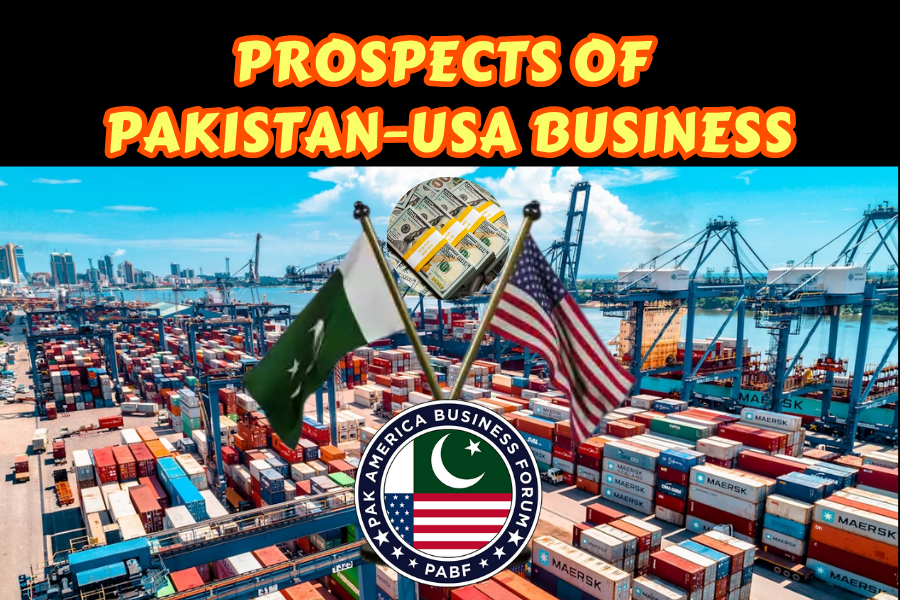(By Mohsin Tanveer)
In June 2025, Pakistan and the United States inched closer to a potentially transformative economic partnership, following a virtual meeting between Finance Minister Muhammad Aurangzeb and US Commerce Secretary Howard Lutnick. President Donald Trump’s repeated reference to Pakistan as a “serious trade partner” reflects a notable shift in Washington’s posture—away from its overreliance on India, and towards Islamabad’s strategic potential. This renewed interest is not without motive: the US seeks to counter growing Chinese influence in South Asia and tap into Pakistan’s vast $6 trillion mineral wealth, including the $7 billion Reko Diq copper-gold project.
Yet, amidst this diplomatic pivot, one truth must remain clear: China has been a faithful, unwavering friend of Pakistan, especially during the May 2025 conflict with India. It was Chinese-built J-10C, JF-17 jets and long-range PL-15 missiles that tore through Indian attacking waves and helped deliver a crushing blow to the Indian Air Force. Beijing stood firmly by Islamabad when it mattered most—not only militarily, but diplomatically and economically.
Now, as American overtures multiply and economic prospects beckon, Pakistan must embrace opportunity—but never at the cost of its time-tested bond with China. The art of statecraft lies in maintaining equilibrium: how to welcome American business and technology without compromising strategic trust with Beijing. That, indeed, is the million-dollar question—and the answer will shape Pakistan’s geopolitical future for decades to come.
I. A Pivotal Moment in Bilateral Relations
The Pakistan–USA economic relationship, historically overshadowed by security ties, stands at a crossroads in 2025. The impending conclusion of trade talks, announced on 25 June, aims to recalibrate a partnership strained by a $3 billion trade imbalance and Trump’s tariff policies. Pakistan’s offer to import US crude oil and invite investment in its mineral sector, highlighted by a joint webinar on the Reko Diq project, reflects Islamabad’s proactive stance to mitigate a 29% tariff on its textile and agricultural exports. Trump’s engagement, including hosting Pakistan’s army chief Field Marshal Asim Munir, underscores a broader strategy to leverage trade for regional stability, as he claimed it “averted a deeper Pakistan–India conflict” (Reuters, 25 June 2025).
For Pakistan, a developing economy with a $376 billion GDP (PPP) and 45% poverty rate, per the World Bank, this partnership offers a lifeline to diversify trade, reduce reliance on Chinese loans, and bolster industrial capacity. For the US, Pakistan’s strategic location, mineral wealth, and counterterrorism cooperation present opportunities to secure critical resources and counter Beijing’s dominance. This article examines what Pakistan can offer, what it stands to gain, and the strategic alignments shaping this burgeoning alliance.
II. Trade Opportunities: Balancing Imports and Exports
a. Pakistan’s Offer: Importing US Crude Oil
Pakistan’s proposal to import US crude oil, a first in its history, addresses the $3 billion trade surplus driving US tariffs. In 2024, Pakistan imported 137,000 barrels per day (bpd) of crude, valued at $5.1 billion, primarily from Saudi Arabia and the UAE (Kpler data). The shift to US oil, potentially matching $1 billion in current imports, aims to ease tariff pressures and diversify energy sources.
- Benefits for Pakistan:
- Tariff Relief: Importing US crude could reduce the 29% tariff, preserving Pakistan’s $5.61 billion export market, dominated by textiles (60% of exports to the US), per UN COMTRADE.
- Energy Security: US light crude, compatible with Pakistan’s refineries like PARCO (41% of production), diversifies supply away from Middle Eastern volatility, per S&P Global.
- Economic Stability: Lower import costs, leveraging US discounts, could ease Pakistan’s $11.1 billion petroleum import bill, mitigating foreign exchange pressures (State Bank of Pakistan).
- Challenges: Pakistan’s refineries face infrastructure constraints, and a shortage of US dollars complicates payments, unlike yuan-based Russian oil deals. A barter system, as suggested by Karachi’s IBA, could mitigate currency issues.
b. Expanding Exports to the US
Pakistan’s exports to the US, valued at $5.61 billion in 2024, include textiles, leather, and surgical instruments. To deepen trade, Pakistan can:
- Diversify Products: Expand exports of pharmaceuticals, IT services, and agricultural goods like rice and mangoes, leveraging the US–Pakistan Trade and Investment Framework Agreement (TIFA).
- Reduce Tariffs: Pakistan’s plan to lower its own tariffs in the 2025–26 budget, per Commerce Minister Jam Kamal, could encourage reciprocal US concessions, boosting bilateral trade to $12 billion, as projected by the Pakistani embassy.
- Benefits:
- Job Creation: Export growth could create 500,000 jobs in textiles and IT, addressing Pakistan’s 16.5% extreme poverty rate, per the World Bank.
- Foreign Exchange: Increased exports would bolster Pakistan’s $11.5 billion forex reserves, critical for debt repayments (State Bank of Pakistan, 2020).
III. Investment Opportunities: Unlocking Pakistan’s Mineral Wealth
Pakistan’s $6 trillion mineral sector, including copper, gold, antimony, and rare earth elements, is a cornerstone of its offer to the US. The $7 billion Reko Diq project in Balochistan, one of the world’s largest copper-gold deposits, headlined a US–Pakistan webinar in June 2025, with the US Export-Import Bank reviewing $500 million to $1 billion in financing.
a. What Pakistan Offers
- Concessions: Pakistan proposes joint ventures and lease grants for US firms in Balochistan’s mining sector, per Commerce Minister Jam Kamal.
- Critical Minerals: Pakistan’s 50 identified minerals, including 3.2 million metric tons of antimony and barite, are vital for US tech and defence industries, per geological surveys.
- Strategic Location: Pakistan’s proximity to Central Asia and the Gulf positions it as a gateway for mineral exports, countering China’s 80% control of global rare earths.
b. Benefits for Pakistan
- Economic Growth: US investment could create 100,000 jobs and add $10 billion annually to GDP, per the Center for International Strategic Studies.
- Infrastructure Development: US technical assistance could address mining sector gaps, enhancing CPEC connectivity to Gwadar port.
- Global Integration: Partnerships with US firms like Freeport-McMoRan could elevate Pakistan’s mining standards, attracting EU and Saudi investors, per the Pakistan Minerals Investment Forum.
c. Challenges
- Security Risks: Balochistan’s insurgency requires robust security for US firms, as seen in past attacks on CPEC projects.
- Regulatory Hurdles: Pakistan must streamline mining laws to ensure transparency, a concern raised by US investors at the 2025 forum.
IV. Defence Production: A Strategic Frontier
Pakistan’s defence industry, producing JF-17 jets, Al-Khalid tanks, and Shaheen missiles, offers untapped potential for US collaboration, despite historical reliance on Chinese technology.
a. What Pakistan Offers
- Joint Production: Pakistan can partner with US firms like Lockheed Martin to co-produce drones or missile systems, leveraging its low-cost manufacturing base, per ISPR.
- Counterterrorism Expertise: Pakistan’s 12,000-troop deployment along the Durand Line and intelligence-sharing, disrupting three major attack plots in 2024, align with US security goals, per Discovery Alert.
- Regional Access: Pakistan’s air and naval bases could support US operations.
b. Benefits for Pakistan
- Technology Transfer: Collaboration could modernize Pakistan’s defence industry, accessing US systems like F-16 upgrades or drone technology, per Jane’s Defence Weekly.
- Economic Gains: Defence exports to the US, potentially $500 million annually, could boost Pakistan’s $1.2 billion arms industry, per SIPRI.
- Strategic Leverage: US partnerships could balance Pakistan’s reliance on China, enhancing autonomy amid regional tensions.
c. Challenges
- Geopolitical Risks: Aligning with the US could strain Sino–Pakistan ties, given $62 billion in CPEC loans.
- Sanctions Concerns: Past US sanctions on Pakistan’s nuclear program necessitate clear agreements to avoid disruptions.
V. What Pakistan Stands to Gain
a. Economic Diversification
- Trade Balance: Importing US oil and goods reduces the trade surplus, preserving export markets and stabilizing the rupee, which depreciated 20% in 2024, per State Bank of Pakistan.
- Investment Inflows: US financing in Reko Diq and IT could attract $2–3 billion annually, per Reuters, reducing Pakistan’s $26 billion debt burden.
b. Strategic Autonomy
- Countering India: US engagement, as noted by Commerce Minister Kamal, shifts focus from India-centric policies, strengthening Pakistan’s regional clout.
- Global Platforms: US support could amplify Pakistan’s voice in the UN and SCO, countering India’s influence, per Foreign Office statements.
c. Social Impact
- Job Creation: Mineral and IT investments could employ 200,000 youth, addressing Pakistan’s 30% unemployment rate among those under 30, per IMF.
- Poverty Reduction: Economic growth could lift 10 million from poverty, aligning with World Bank goals.
VI. What the US Gains
- Critical Minerals: Access to Pakistan’s antimony and rare earths supports the 2025 NDAA’s goal to reduce Chinese mineral imports by 40% by 2030.
- Counterterrorism: Pakistan’s intelligence-sharing and border operations bolster US security, per Rubio’s 8 April call with Ishaq Dar.
- Geopolitical Leverage: A stronger Pakistan counters China’s regional dominance, aligning with US Indo-Pacific strategies, per The Media Line.
VII. Strategic Considerations and Risks
Pakistan must balance US engagement with its $62 billion CPEC commitments to China. Social media posts warn of a “reset” risking Sino–Pakistan ties, but Islamabad’s offer of zero-tariff deals and crypto partnerships shows deft diplomacy. Regulatory reforms and security assurances are critical to sustain US investment, while Pakistan must guard against over-dependence on Washington, learning from India’s pivot to the West.
VIII. Conclusion: A Partnership of Promise and Prudence
The Pakistan–USA business prospects, galvanized by 2025 trade talks, herald a new era of economic and strategic alignment. Pakistan’s offer of crude oil imports, mineral concessions, and defence cooperation unlocks opportunities for growth, job creation, and regional influence, while the US gains critical resources and a counterweight to China. Yet, Pakistan must tread carefully, balancing US ties with Chinese partnerships and countering India’s regional ambitions. As Trump champions this “golden opportunity,” per The Media Line, Pakistan’s path lies in strategic pragmatism—leveraging trade, investment, and defence to forge a resilient future. History beckons Islamabad to seize this moment, not as a supplicant, but as a partner poised for prosperity.







